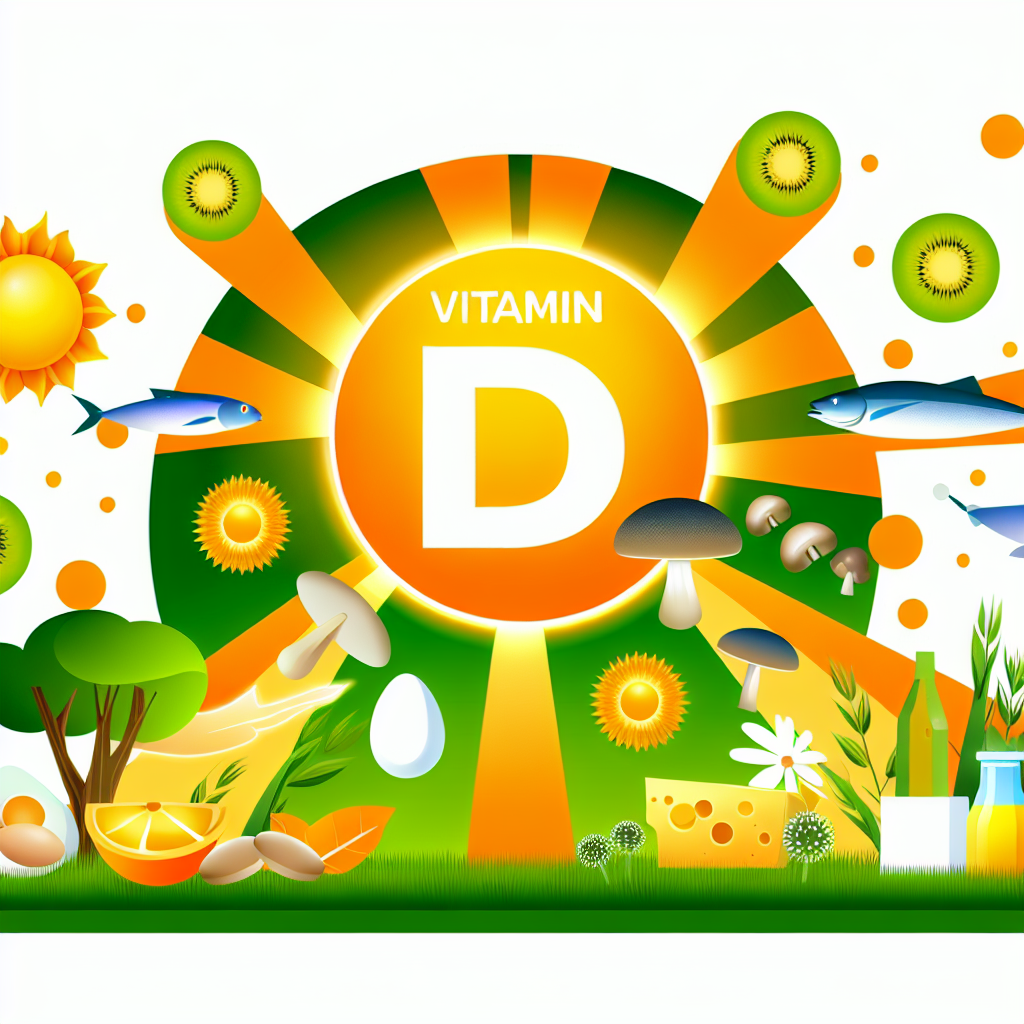For billions of years, plants and fungi have harnessed the sun's energy through photosynthesis to create food for themselves and humans. Now researchers in the Joint Center for Artificial Photosynthesis are pursuing breakthrough chemistry to replicate this natural process.
The body's main natural source of vitamin D is the sun's ultraviolet-B rays, which penetrate uncovered skin and convert cholesterol precursors into the active form of vitamin D. Some foods also contain vitamin D, including butter, cod liver oil, fatty fish, eggs, and fortified milk.
Natural Production
The sun’s rays are the main source of vitamin D. Known as the sunshine vitamin, it has long been essential to human health. It’s a fat-soluble vitamin that helps the body absorb calcium and is critical to bone health. It’s also been linked to numerous other biological functions.
In the skin, sunlight causes a chemical reaction that produces vitamin D. The starting molecule is 7-dehydrocholesterol, which absorbs solar ultraviolet B (UVB) radiation in the epidermis and immediately converts to previtamin D3. This molecule then undergoes thermally induced isomerization to produce vitamin D3 – the form of the vitamin most often measured by physicians. Excessive UVB exposure degrades preD3 and vitamin D derived from diet into biologically inert photoproducts.
Vitamin D in the circulation is metabolized in the liver by 25-hydroxylase to make the active form of vitamin D known as 1,25(OH)2D3, which is needed for skeletal and non-skeletal function. The body can only store up to a certain amount of vitamin D, so supplemental intake is important.
People in the northern climates have a harder time producing vitamin D through sunlight, and they tend to have less of a natural supply than those nearer to the equator. Homebound individuals, those who wear long robes or dresses for religious reasons, and people whose occupations prevent frequent sun exposure can also have difficulty getting enough vitamin D.
Dietary Sources
The vitamin D in our skin and most foods comes from a precursor called 7-dehydrocholesterol. Sunlight's ultraviolet B (UVB) rays transform it to vitamin D3, and the liver and kidneys convert that to the active form our bodies use, 25-hydroxyvitamin D [25(OH)D], or calcitriol. Vitamin D2 and D3 are often lumped together and referred to as the sunshine vitamin, but they function differently and have distinct chemical properties [1].
People whose culture or religion prevent them from being outdoors; those who live in northern climates and spend little time indoors; and some older adults are at risk of inadequate dietary intakes of vitamin D because their skin is less able to synthesize it. In addition, the pigment melanin in dark skin reduces the skin's ability to absorb UVB rays, so blacks typically have lower serum levels of 25(OH)D than whites.
Fortunately, our diets can supply sufficient amounts of vitamin D in the form of fish, fortified milk and cereals, eggs, and some vegetable oils. As with all fat-soluble vitamins, the body only needs very tiny amounts to support good health. Yale Medicine endocrinologists have found that balanced vitamin D intake is associated with bone health and reduced risk of osteoporosis, as well as with a variety of other health benefits, including cancer, cardiovascular disease, depression, multiple sclerosis, type 2 diabetes, and weight loss.
Health Insights
Although a vitamin, Vitamin D breaks some of the rules typically associated with vitamins. It’s not a single chemical but many—both D2 and D3—that are biologically inert until the liver and kidneys transform them to the physiologically active 1,25-dihydroxyvitamin D [1,25(OH)2D], or calcitriol.
People who don’t get enough sun or don’t consume enough dietary sources of vitamin D can develop a deficiency. This is especially common in people of certain skin colors, because greater amounts of the pigment melanin in dark skin reduce the ability of the skin to synthesize vitamin D on exposure to sunlight. It can also occur in older adults who tend to spend more time indoors.
The best-known role of vitamin D is maintaining bone health by increasing intestinal absorption of calcium. A deficiency in children causes rickets, and a deficiency in adults leads to osteoporosis, which can cause weak, brittle bones.
Other benefits of balanced vitamin D intake are being explored, including reduced cancer risk and depression. A recent clinical trial found that higher vitamin D levels are associated with lower rates of multiple sclerosis, an autoimmune disease that can damage the myelin sheath of nerve cells in the brain and spinal cord and lead to muscle weakness, sensory loss, and spasticity.
